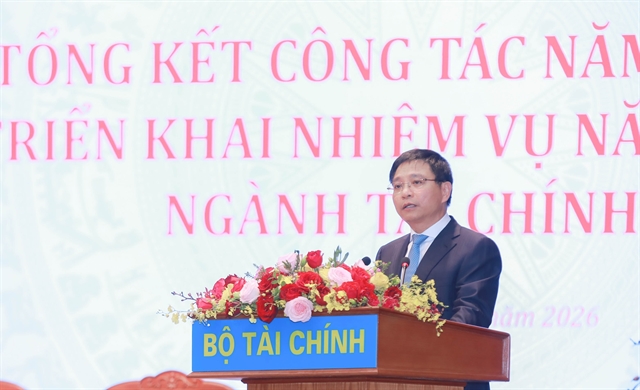 Economy
Economy


|
| Ngô Sỹ Hoài, Vice President of Việt Nam Timber and Forest Product Association (VIFORES) |
The wood processing and export industry has performed impressively despite the COVID-19 pandemic having a negative impact on the economy.
Vietnam News Agency spoke with Ngô Sỹ Hoài, Vice President of Việt Nam Timber and Forest Product Association (VIFORES), on this matter.
The COVID-19 pandemic has seriously affected many industries, including wood processing industry and exports. However, the industry has performed well, what exactly has been achieved?
The export turnover of wood and non-timber forest products exceeded US$10 billion for the first time last year. The timber industry and non-timber forest products were also ranked in the six categories with the highest export turnover of more than $10 billion per year.
We still had the old growth momentum in the first three months of this year, but when the COVID-19 pandemic broke out in many partners in the second quarter, the wood industry, as well as other industries, faced many difficulties. The supply chain was broken and countries delayed receiving contractual goods.
But fortunately, the pandemic has been controlled well in Viet Nam and since the third quarter of this year, we have recovered production with export turnover exceeding $1 billion each month. We had exported timber and non-timber forest products worth more than $10.5 billion by the end of last month.
Following such growth momentum, what are the opportunities for the Vietnamese wood industry in the near future?
The Vietnamese wood industry has a chance to grow well in the coming years, with the target set that the total export value of wood and non-timber forest products will reach about $20 billion by 2025.
We still have the advantage of labour, hard work, relatively low wages, abundant raw materials from domestically planted forests and a team of dynamic, and creative entrepreneurs with aspirations to get rich and contribute to the development of the country.
In addition, we have become members of free trade agreements such as the CPTPP, EVFTA and many free trade agreements with several important partner countries. Therefore, the wood industry has a fairly open market and is not bound by tariff barriers. However, opportunities always go hand in hand with challenges. Even so, I believe we still have plenty of room to turn the wood industry into a goose that lays golden eggs.
How would you evaluate the processing and production capacity of Vietnamese timber enterprises?
When it comes to capacity, we need to mention three factors. In terms of management capacity, we have a team of aspiring entrepreneurs; in terms of technology and equipment capabilities, although most of our businesses are small and medium-sized enterprises, their technological capacity and equipment are limited but in general, they adapt and actively import new technology equipment, allowing the production of products that meet the market's needs.
In addition, when talking about competencies, it is necessary to discuss a team of skilled workers. We have a fairly large team of workers, but they surely need training to improve skills to increase the productivity and competitiveness of the industry.
What are the biggest difficulties for Vietnamese wood exports?
Our wooden products have been exported to more than 120 different countries and territories around the world. Việt Nam has also become one of the leading manufacturers and exporters of wood products in the world. However, opportunities are always accompanied by challenges. The two biggest challenges that we are facing are technical and commercial barriers.
Regarding technical barriers, wood is a product of raw materials from the forest. Although mostly from planted forests, countries also set very strict requirements to ensure all processed, consumed domestically and exported wood is from legal sources.
In addition, although free trade agreements have been signed, many countries often set barriers to protect trade, especially anti-dumping. So, we must be prepared to deal with these moves from big markets.
Facing such challenges, what solutions will help improve the identity of current Vietnamese products and avoid trade disputes on the world wood market?
In a macro perspective, in my opinion, the Government needs to negotiate with countries that consume Vietnamese wood products as well as countries exporting wood materials to the country so both sides can make legal and institutional frameworks transparent, helping avoid the risks of bringing illegal timber into supply chains.
For businesses, it is necessary to improve the capacity of accountability, be careful in importing raw materials from abroad, ensuring how to put wood into production and processing, and exports must come from a legal source. In addition, each business also needs to improve its competitiveness amid increasing competition.
Our association also needs to do a better job of bringing together all stakeholders in the product supply and processing chain, from growers to end-to-end businesses, to improve competitiveness and enhance the reputation of Vietnamese wood brands in the world market.
The market has opened up, but it seems the impact of COVID-19 has changed customer demand. What will be the strategic products of the Vietnamese wood industry?
With a global pandemic outbreak, each business and each industry must adapt to the "new normal" context, so the wood industry, like many other industries, must increase e-commerce and connect with customers and partners through online transactions.
The wood industry currently focuses on four main product groups: interior and exterior wooden products, artificial boards, wood chips and tablets for making biomass energy.
Tablets are emerging products and Việt Nam also has a competitive advantage. Last year, we exported more than 3 million tonnes and earned some $400 million.
We still have to develop all four groups of goods at the same time. But I must emphasise that we must increase exports of products with the highest added value, such as tables, chairs and beds.
At the same time, Vietnamese businesses can export architectural spaces, interior spaces, receive large contracts to design and decorate interior for luxury buildings, palaces and hotels. Through that, we can enhance the image, reputation and brand name of Vietnamese timber enterprises.
How are raw material and growing areas being prepared to export timber sustainably?
In exporting wood products, raw materials, especially raw materials from domestically grown forests, are very important. However, farmers have exploited when the forest is very young for a long time. The Government and the Ministry of Agriculture and Rural Development also have policies to help farmers extend the planting cycle to have large timber, but so far, we have not achieved much.
I think that in the coming time, one of the important jobs of both forestry and wood processing industry is how to help farmers integrate multiple solutions, extend the business cycle, plant forests and producing timber, supplying higher quality inputs to get competitive products in the market. — VNS




